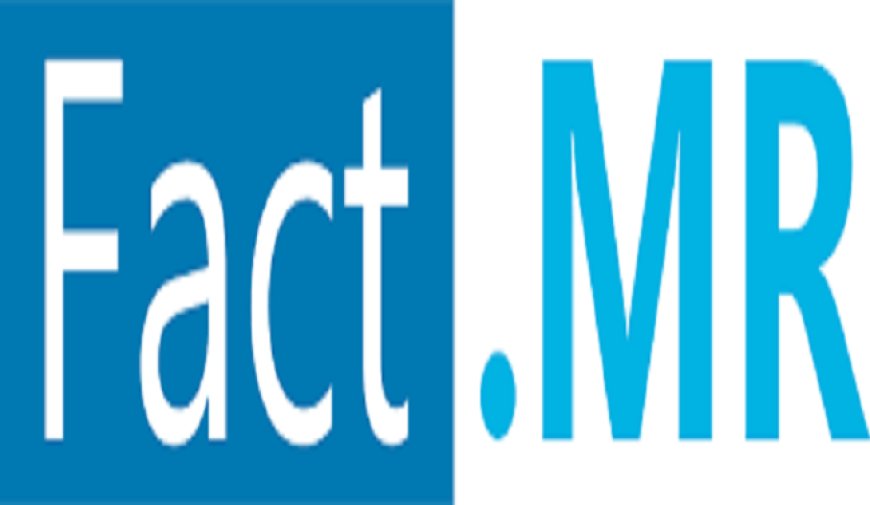In-wheel Motor Market Research Report Analysis by Fact MR
The global in-wheel motor market is valued at US$ 1.2 billion in 2023 and is projected to reach US$ 17 billion by the end of 2033. Worldwide demand for in-wheel motors is expected to grow at a CAGR of 30% from 2023 to 2033.

The global in-wheel motor market is valued at US$ 1.2 billion in 2023 and is projected to reach US$ 17 billion by the end of 2033. Worldwide demand for in-wheel motors is expected to grow at a CAGR of 30% from 2023 to 2033.
The in-wheel motor market is gaining significant traction as electric vehicle (EV) technology advances and the demand for efficient, compact propulsion systems grows. In-wheel motors, also known as hub motors, are integrated directly into the wheels of a vehicle, eliminating the need for traditional transmission systems and drivetrains. This innovative design enhances vehicle performance, improves energy efficiency, and reduces overall weight. The growing emphasis on sustainability and reducing carbon emissions is further driving the adoption of in-wheel motors across the automotive industry.
Get Free Sample Copy of This Report-https://www.factmr.com/connectus/sample?flag=S&rep_id=2541
Market Insights
The rising adoption of EVs and hybrid vehicles is a primary factor fueling the growth of the in-wheel motor market. Automakers are investing heavily in research and development to integrate these motors into next-generation electric cars. The ability of in-wheel motors to provide superior torque control and independent wheel drive functionality is revolutionizing vehicle dynamics. Additionally, advancements in battery technology and power management systems are making in-wheel motors more viable and cost-effective, ensuring wider adoption in both passenger and commercial vehicles.
Future Outlook
The future of the in-wheel motor market looks promising, with continued advancements in electric mobility and autonomous driving technologies. The push for lightweight, high-efficiency vehicle components is expected to drive further innovation in in-wheel motor designs. Emerging trends such as solid-state batteries and wireless charging technology are likely to complement the adoption of in-wheel motors, making electric vehicles more efficient and convenient. Additionally, government incentives and policies supporting clean energy transportation will further boost market growth in the coming years.
Market Demand
The demand for in-wheel motors is increasing as automakers and consumers seek improved vehicle efficiency and enhanced driving performance. The ability of these motors to provide all-wheel drive capabilities without the complexity of traditional drivetrain components makes them highly desirable for modern EVs. Additionally, urban mobility solutions such as electric bikes, scooters, and small autonomous vehicles are incorporating in-wheel motor technology to optimize space and reduce energy consumption. The rising popularity of shared mobility and last-mile transportation solutions is also contributing to increased demand for in-wheel motors.
List of Key Companies Profiled in The Report
- Protean Electric
- Printed Motor Works
- NTN Corporation
- ECOmove
- Lordstown Motors
- General Motors
- Others
Market Opportunities
The in-wheel motor market presents numerous opportunities for innovation and growth. Companies developing advanced materials and lightweight components for in-wheel motors can capitalize on the increasing adoption of EVs. Moreover, collaborations between automotive manufacturers and technology firms are leading to the development of smart in-wheel motor systems with enhanced connectivity and AI-driven performance optimization. Expanding applications beyond passenger vehicles—such as in industrial vehicles, delivery drones, and military applications—also offer new business prospects for industry players.
Recent Industry News
Recent developments in the in-wheel motor market indicate a surge in investments and product launches. Leading automotive companies and startups are introducing new prototypes and commercial models featuring in-wheel motors. Several automakers are testing in-wheel motors in their upcoming electric vehicle lineups to evaluate performance and efficiency benefits. Additionally, strategic partnerships between motor manufacturers and battery technology firms are accelerating advancements in integrated power solutions, ensuring seamless energy distribution for optimal vehicle performance.
Notable Developments
Notable advancements in the in-wheel motor market include breakthroughs in power density and heat dissipation technologies, making motors more efficient and reliable. Companies are developing modular in-wheel motor systems that can be easily integrated into various vehicle platforms, reducing design and manufacturing complexities. The increasing use of advanced control algorithms and AI-powered monitoring systems is also enhancing the performance and longevity of in-wheel motors. Furthermore, regulatory support for electrification and smart mobility solutions is expected to drive sustained market expansion in the years ahead.
Competitive Landscape
Leading companies in the in-wheel motor market are prioritizing product launches, quality control, adherence to product standards, supply chain optimization, and strategic collaborations to strengthen their market position. A key focus is on developing fully autonomous driving solutions while complying with safety regulations, creating lucrative opportunities for industry players.
For example, Human Horizons, Protein Electric, and Wuxi Weifu e-Drive Technology have partnered to develop in-wheel hub motors for the next generation of intelligent connected vehicles. Additionally, a new generation of automotive entertainment systems was introduced through a collaboration between Google and Renault-Nissan-Mitsubishi. The industry is also experiencing a rising demand for enhanced comfort and safety features.












